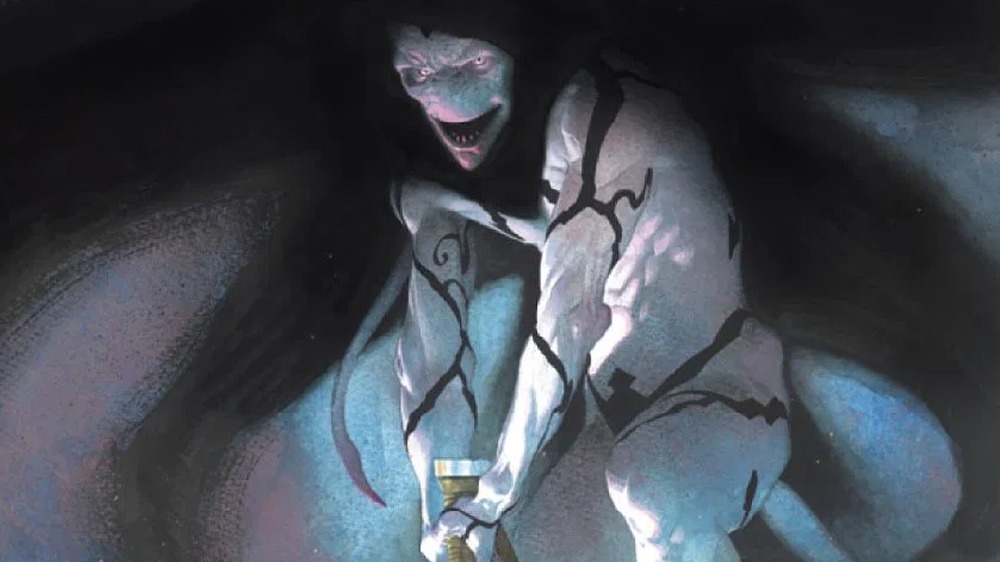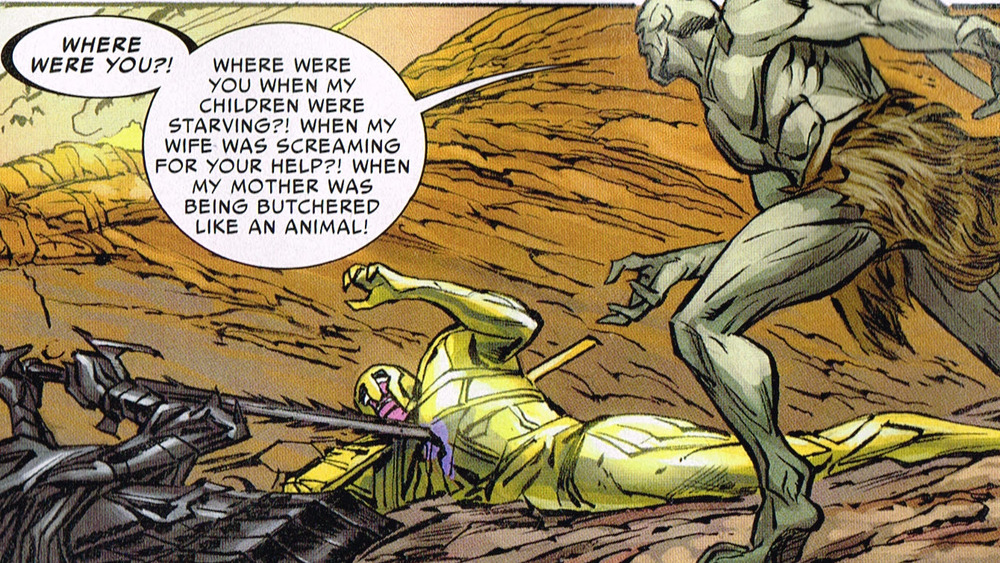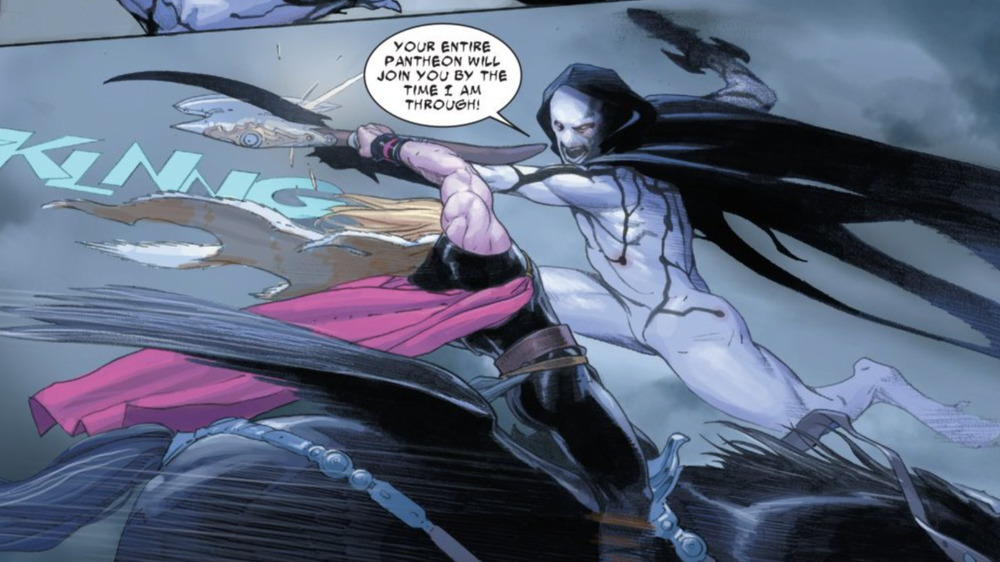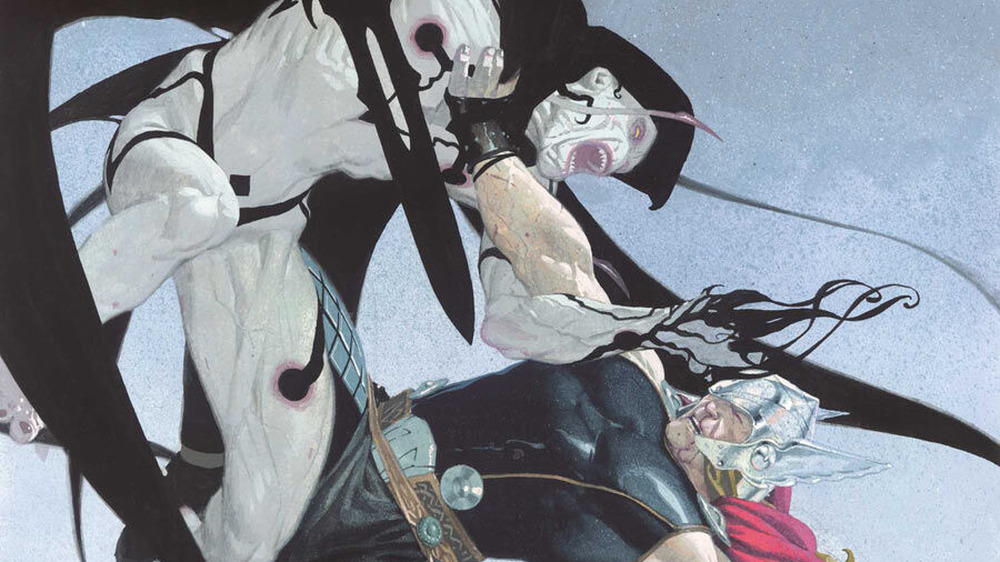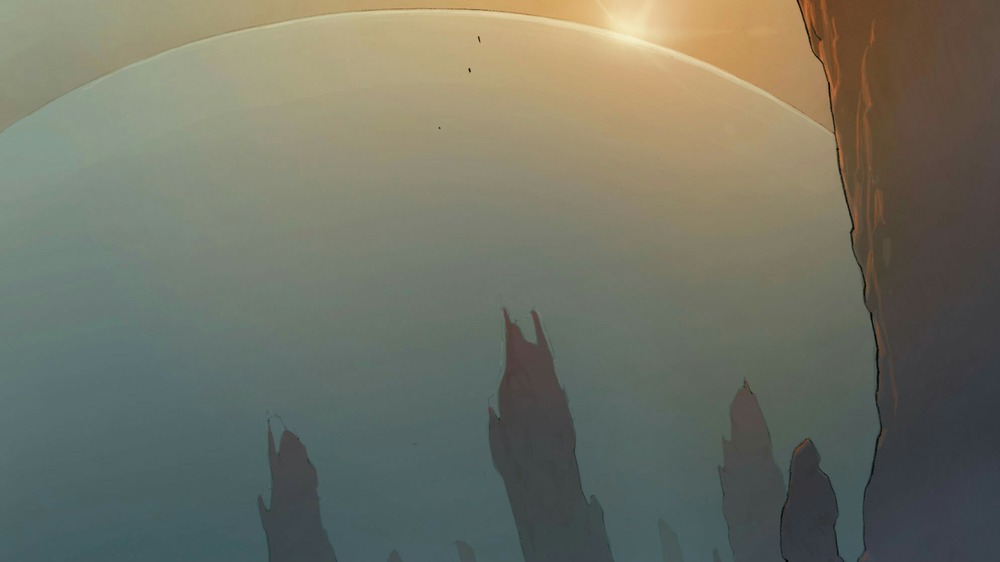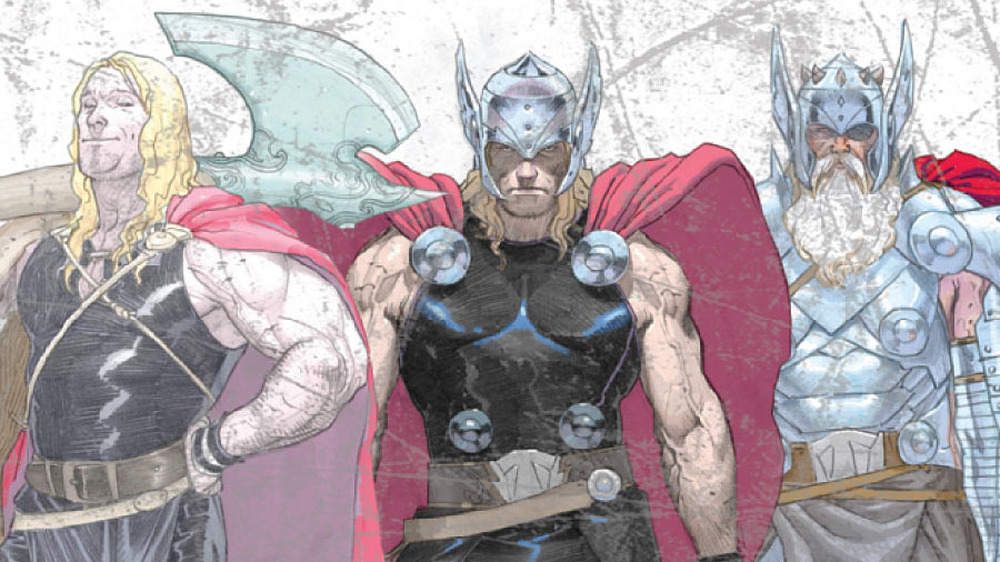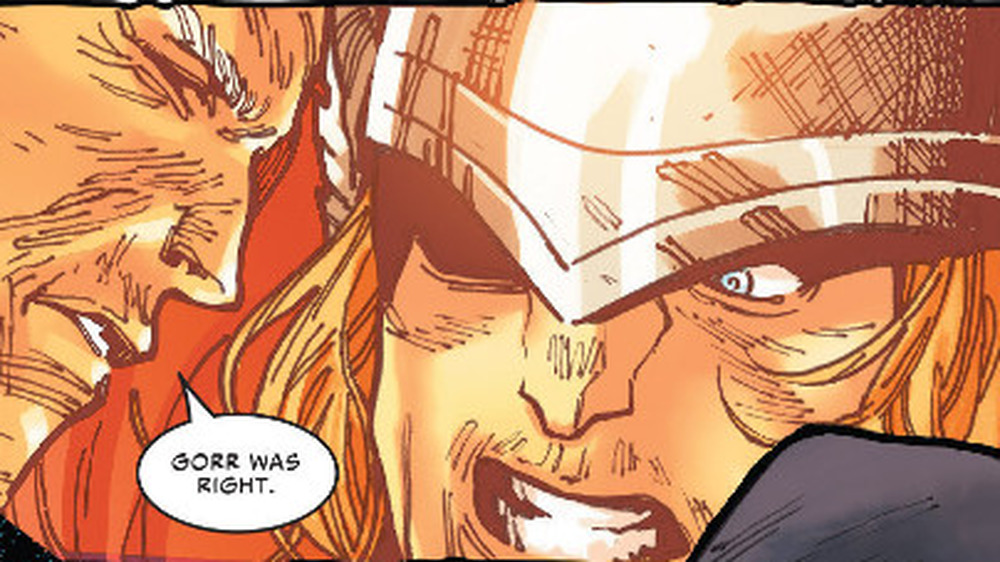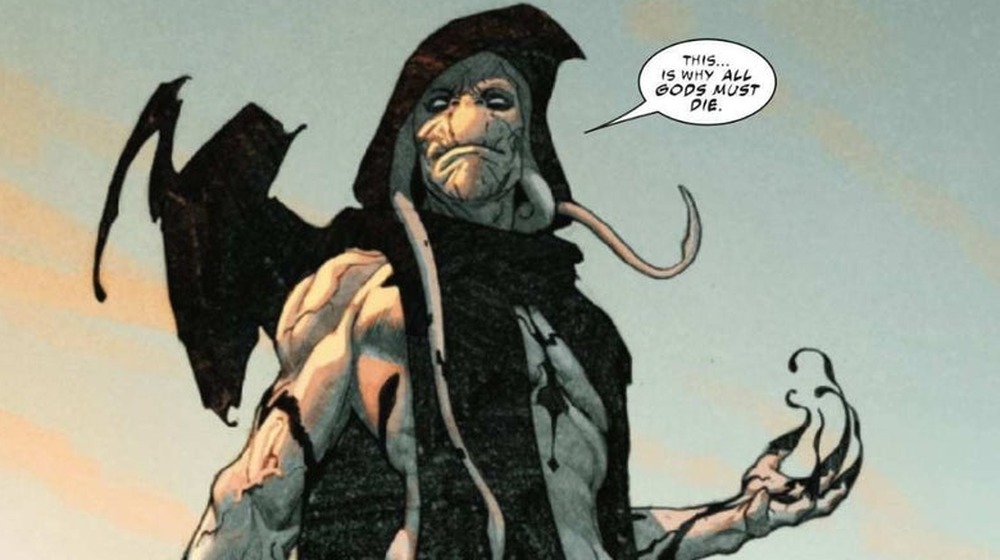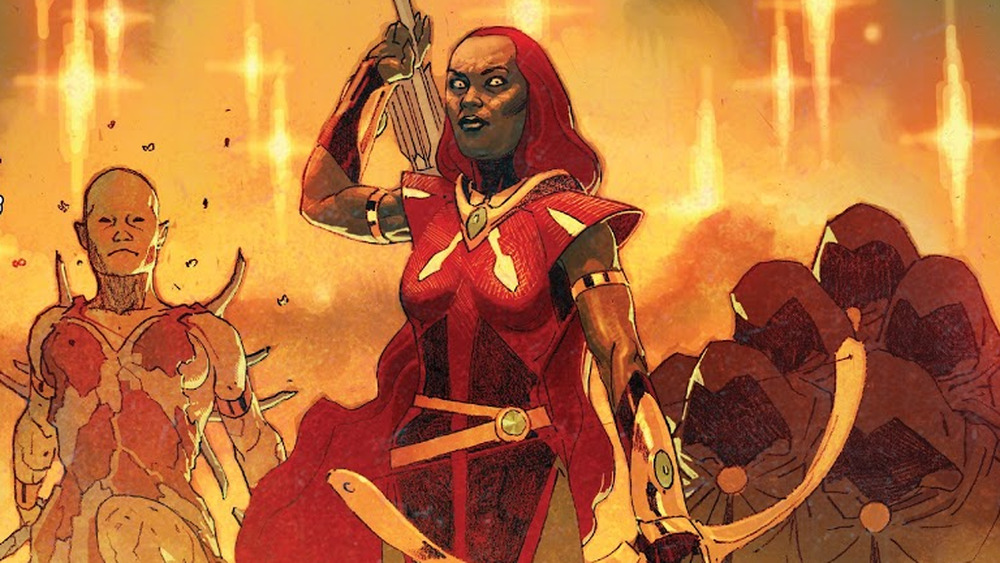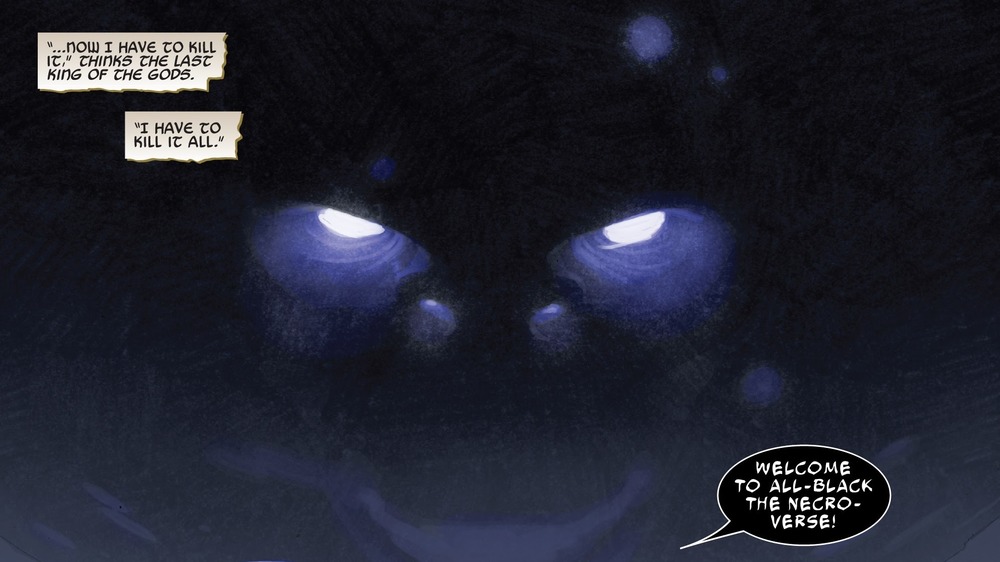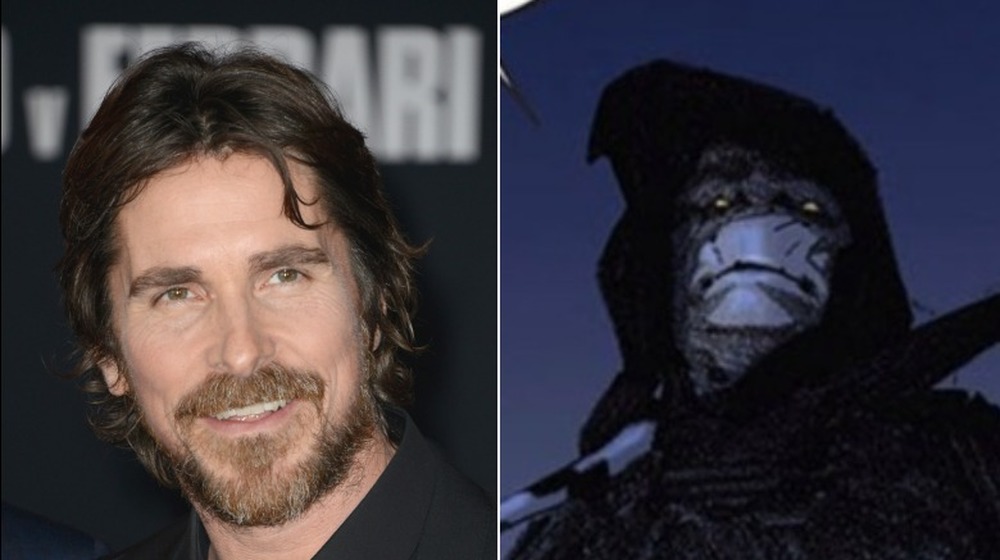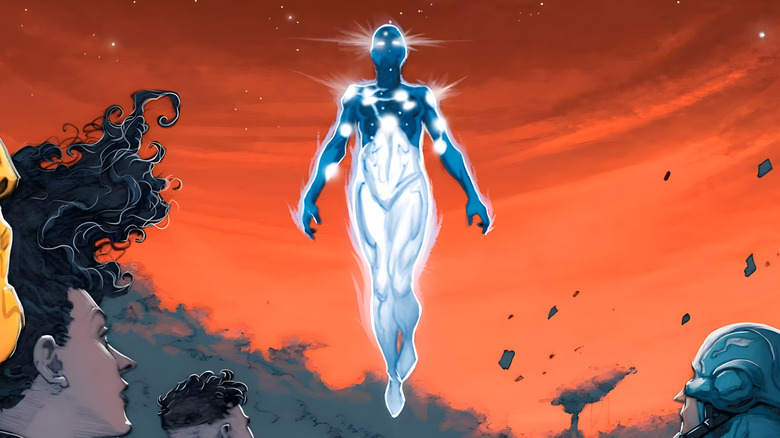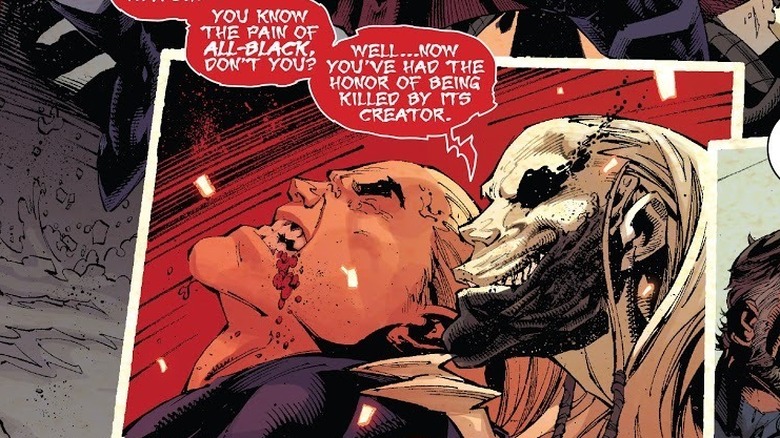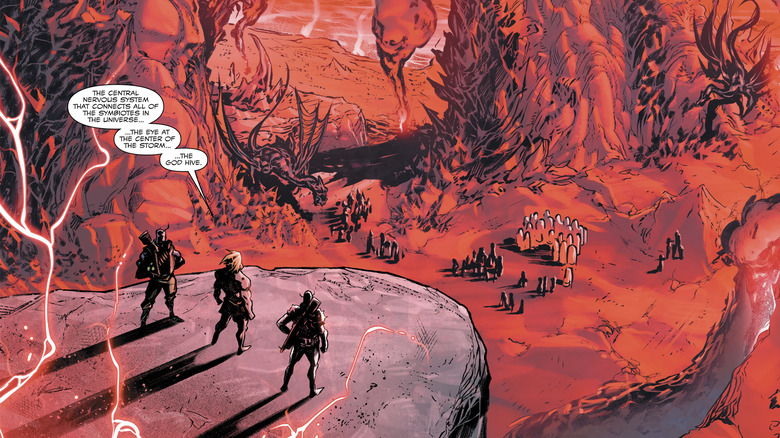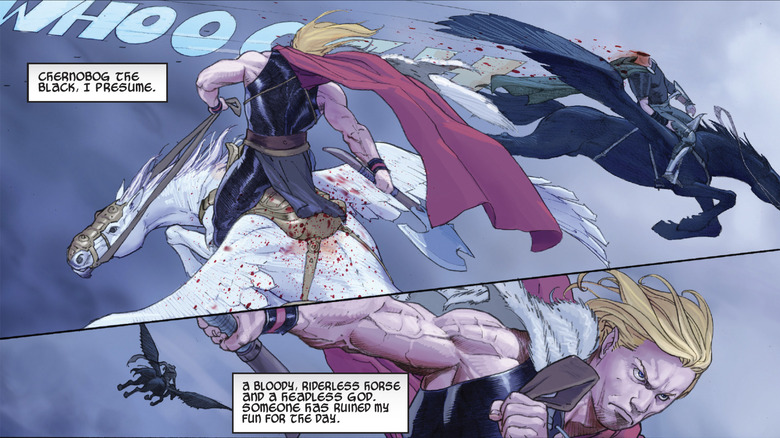The Untold Truth Of Marvel's Gorr The God Butcher
Among the many announcements from 2020's Disney Investors Day was that Academy Award-winning actor Christian Bale, better known for playing a certain bat-themed vigilante, will portray the villain Gorr the God Butcher in Taika Waititi's Thor: Love and Thunder.
While this villain may sound unfamiliar to most non-comic book fans, Gorr the God Butcher has not existed in the Marvel universe for all that long either. He first appeared in Jason Aaron and Esad Ribic's Thor: God of Thunder comic from 2012. This arc was so beloved that it was ranked #8 in the 10 greatest Thor stories of all time according to comicbook.com back in 2017.
Nevertheless, Gorr is a villain who is so powerful that it took three Thors to beat him. We're here to explore the comic history of Gorr the God Butcher, from his dark origins to how he could become a major threat in the Marvel Cinematic Universe (MCU).
Tragic origin
Issue #6 of Thor: God of Thunder shows that Gorr had a good reason to hate the gods.
Gorr is an unknown alien born on "a planet with no name." His story begins 3000 years before the events of God of Thunder and starts with him and his faithful mother wandering the barren desert until she sacrifices herself to save him. Years later, Gorr gets married and fathers some children, but they are all on the verge of starvation. His pregnant wife Arra always kept faith, but she dies in an earthquake. After his last child Agar dies of starvation, Gorr audibly expresses that no gods exist and is cast out by his superstitious people as a result.
Gorr wanders the desert until he stumbles upon two gods fighting — a dark elder god named Knull and a gold-armored purple-skinned god. Gorr becomes enraged when the gold-armored god begs for help and kills him after merging with Knull's weapon, All-Black the Necrosword, thus beginning a long and bloody conquest against every god he encounters. It's also important to mention that the All-Black is the first symbiote ever created.
Encountering Thor in the 9th century
Thor: God of Thunder #2 reveals that in 893 AD, a brash Thor, who is not able to wield Mjolnir, sets sail with a group of Vikings to battle two Slavic gods: Perun the Storm Lord and Chernobog the Black. One of the Slavic warriors on the battlefield sees a winged horse come down from the sky, but the steed has no rider. Thor lets his men fight while he takes the horse to investigate these gods' disappearance only to find the headless corpse of Chernobog on his steed. Gorr then attacks the God of Thunder and almost kills him in a battle when Thor summons a lightning bolt that knocks them both out.
After seven days of unconsciousness, Thor wakes up in issue #3 and tracks Gorr to a nearby cave in order to finish what he started. Gorr subdues Thor and tortures him for the location of Asgard. Luckily, Thor's Viking friends arrive in issue #5 to rescue him seven days later, which gives Thor an opportunity to escape his chains and cut off Gorr's right arm. Although Thor thought that he had killed the God Butcher, their conflict was far from over.
Thor the Avenger
Thousands of years later in Thor: God of Thunder #1, Thor answers the prayer of a little girl on the planet Indignarr, whose people are in desperate need of rain. After staying for festivities, Thor asks an elder why the little girl did not pray to her own gods, to which the elder replies that their gods have not visited them in years. Thor subsequently travels to a nearby palace in the sky in order to investigate these disappearances and discover the gods' corpses rotting in a chained room. He realizes that it is the handiwork of Gorr after fighting one of his Black Berserkers, semi-sentient bestial creatures that were created with the Necrosword.
Three issues later, Thor travels to the cave where he last saw Gorr and finds a god that Gorr tortured named Shadrak, who escaped to this cave because it's the last place Gorr would look. Thor then takes Shadrak to the Halls of All-Knowing in Omnipotence City so that he can learn more about specific gods. After fighting off more Black Berserkers, the God of Thunder makes his way to Chronux, where Gorr slaughters many Time Gods and uses their blood to fill the Pool of Forever, which he uses to travel to back in time before the beginning of the universe and steal a baby Elder God's heart as seen in Thor: God of Thunder #5.
Godbomb
After a brief skirmish with the God of Thunder in present day in Thor: God of Thunder #5, Gorr uses the Pool of Forever to travel to Earth-14412 where he spends the next 900 years either killing gods or forcing them to mine broken planets and the cores of stars for materials to build his Godbomb. This is a moon-sized explosive capable of killing all gods across the entirety of the timestream, which he forced Shadrak to design as he later identified himself as the God of Bombs. The only god on Earth-14412 that Gorr could not kill or capture was the All-Father Thor, who he constantly tormented by sending Black Berserkers to brutalize him and make him wish for death. Fortunately, the arrival of Earth-616 Thor boosted the All Father's confidence and they set sail for the Black World of Gorr.
Near the completion of the Godbomb in Thor: God of Thunder #7, Gorr captures Young Thor and enslaves him along with the other surviving gods such as his future granddaughters: Frigg, Ellisiv, and Atli. Since Gorr allowed his slaves a few moments' rest every seventh day as a form of mockery, they all come together to discuss the best course of action. Frigg reveals in issue #8 that she and the other slaves stole unstable matter from cores of stars and fashioned it into a bomb. Young Thor steals this bomb and hurls it at the Godbomb, but the explosion sends him flying towards his older selves.
Three Thors
After Young Thor meets up with his older selves, the three gods begin their assault on the Black World of Gorr in Thor: God of Thunder #9. They nearly succeed in killing the God Butcher but after absorbing the power of his slaves, Gorr becomes too powerful and defeats all three Thors. The subsequent issue sees Gorr drag Young Thor to the core of the Godbomb so that he can use his blood to activate it, but Young Thor uses the last of his strength to bite out one of Gorr's eyes and is subsequently thrown out of the Godbomb. All three Thors once again rally against the God Butcher, but they are too late as he uses the heart of a feline deity to activate the Godbomb.
In Thor: God of Thunder #11, Thor the Avenger uses two hammers to absorb the Godbomb's blast and becomes engulfed in living darkness. With Gorr no longer possessing the Necrosword, Young Thor uses his axe Jarnbjorn to behead the powerless God Butchers before Thor the Avenger collapses. The All-Father Thor purges the All-Black from the Avenger's body, throws the Necrosword and Gorr's world into a black hole, and sends the younger Thors back to their respective times. Fortunately, Thor the Avenger brings other gods with him to occupy Indignarr.
Original Sin
Even though Gorr died in Thor: God of Thunder, his influence still lived on in the 2014 comic event Original Sin, which was also written by Jason Aaron.
This story sees Earth's Mightiest Heroes investigate the murder of Uatu the Watcher and the theft of his eyes. Nick Fury later reveals that he did both and uses the knowledge from both of Uatu's eyes to defeat the Avengers. In the case of Thor, Fury whispers something in his ear, which causes him to lose his worthiness and makes him unable to wield Mjolnir as a result. What exactly did Fury whisper? In Issue #5 of Aaron's Unworthy Thor miniseries from 2017, Thor, who now went by "Odinson," tells Beta Ray Bill that Fury whispered "Gorr was right" during their battle on the moon. "Gods...are vain and vengeful creatures. Always have been," Odinson says. "The mortals who've worshipped us for centuries...would all be better off without us. We gods do not deserve their love. No matter how much we fight to fool ourselves. We are all unworthy."
Thankfully, Odinson allows Jane Foster to become the new Thor while he goes on a journey of self-discovery. He would also reforge his own Mjolnir at the end of Aaron's War of the Realms #6 from 2019.
Gorr resurrected
In the four-part miniseries King Thor from 2019, which was written by Jason Aaron and illustrated by Esad Ribic, King Loki has obtained All-Black the Necrosword and is in a heated battle with King Thor, which razes Asgard and extinguishes the sun. Remember that it took three Thors to beat Gorr, a mortal who was infected by living darkness, while Loki is already immortal so All-Black makes him that much more powerful. As Loki is about to kill Thor, he is stabbed through the back by a newly resurrected Gorr, whose consciousness was contained inside the Necrosword.
Even though Gorr was finally living in a world without gods, Loki brought him back to slaughter him after he killed Thor. Gorr and King Thor engage in an epic battle where the former claims that he will eliminate all life in the universe, starting with Midgard, and replace it with life that has no need of godly guidance. Loki joins the fight but he and Thor are swallowed up in a literal sea of living darkness.
Gorr vs gods of Indigarr
In King Thor #3, Thor's granddaughters, the Goddesses of Thunder, travel to Indigarr where Thor brought gods all those eons ago. Although the planet is now a withered garden, the goddesses pray aloud with the hopes of getting these gods' attention — and it works! The Sky Lords of Indigarr include Rose Father, The Choir, Our Lady of Comets, Meat Mother, and the Prince of Soots. The Goddesses of Thunder recruit these deities to help King Thor to defeat Loki. By the time they reach the battle, however, Loki had resurrected Gorr, who had reclaimed the All-Black.
When the Sky Lords attack Gorr, they mockingly claim that they were his legacy, since Thor gave all the enslaved gods who had forgotten where they came from "a chance to be gods again." Combined with the might of the Goddesses of Thunder, the Sky Lords were able to overpower the God Butcher.
Gorr becomes the universe
After Atli decapitates Gorr in King Thor #3, she wants to make sure he is dead by throwing his head in a star and then throwing that star into another star. Speaking of which, the stars in the area disappear. Gorr reveals that he ate them since his body no longer needs flesh and feeds on the ruins of the universe, transforming himself into All-Black the Necroverse.
In King Thor #4, Thor tries to destroy the Necroverse but is sucked into a cluster of massive superholes. Fortunately, Loki distracts the Necroverse by telling him stories about Thor's good deeds, which gives the All-Father enough time to destroy the All-Black symbiote with the power of the God Tempest. Loki then rides into the sun in order to revitalize it. Gorr is now an amnesiac mortal on Indigarr where he would live out the remainder of his days in peace.
After Thor wakes up from his "Sleep of Sleeps," he gives his granddaughters Mjolnir as their birthright and sails into the void to hold back the entropy destroying the universe.
Gorr in the MCU
MCU fans must wonder if a comedic director like Taika Waititi can successfully adapt a darker and more nuanced character like Gorr the God Butcher. Hopefully with an actor like Christian Bale, Waititi can pull it off.
As for how Gorr will fit into the MCU, Thor: Ragnarok already introduced a variation of the Necrosword, which is in truth an amalgamation of Hela's Nightsword and the All-Black. Of course, this sword was destroyed with Hela when Surtur obliterated Asgard, so the MCU will have to introduce Gorr another way. Considering that the All-Black is the original symbiote, Gorr's introduction could bring Venom and the symbiotes into the MCU.
Natalie Portman is already confirmed to wield Mjolnir as Jane Foster Thor in Thor: Love and Thunder so she, Chris Hemsworth's Thor, Tessa Thompson's Valkyrie, and Jaimie Alexander's Sif can team up to take on a villain as powerful as Gorr.
Gorr and Captain Universe are mortal enemies
When the first few pieces of Gorr's tragic backstory were revealed in "Thor: God of Thunder #6," we were given the bullet points of his trauma and the auspicious god battle he stumbled upon, granting him the Necrosword. But the real story behind Gorr's ironic deification is much, much deeper than a simple tale of misery and fortune — it not only involves the symbiote god Knull and his amorphous, umbral sword, but also an ancient, supreme God of Light, the powerful Enigma Force, and even the universe's own avatar, Captain Universe.
One of the two gods that a young Gorr fatefully stumbled upon was the dark lord Knull, but the other is just as important. That god was an agent of Knull's eternal archenemy, the God of Light. In the exact same way that Knull poured his power into one weapon, The God of Light poured his power into the Enigma Force. The two weapons are forever opposed, and so are their wielders. Gorr, wielding the Necrosword, will forever be destined to oppose wielders of the Enigma Force, which all assume the mantle of Captain Universe.
Gorr and the King in Black
Though Gorr's predestined rivalry with Captain Universe has generally been relegated to a hypothetical encounter, destined to occur at some point in the long stretches of space and time, there is one instance where it did become all-too-real — in this case through an odd and unforeseeable proxy war.
During the "King in Black" event, Knull returned to Earth, seeking to destroy it, reabsorb its many symbiotes into his own form, and kill Venom's host, Eddie Brock. Though neither Gorr nor Captain Universe took part in the epic struggle directly, both were very much present. Though Thor seemingly destroyed the Necrosword during his struggle with Gorr, Knull simply reforged it during his conquest of Earth. Symbiotes retain bits of their masters' consciousness and personalities inside them, meaning some of Gorr was contained within Knull and his sword. Likewise, the Enigma Force itself entered the fight, wielded at various times by the Silver Surfer, Brock, and Brock's son Dylan. The same battle that Gorr witnessed between Knull and one of the God of Light's avatars some 3000 years earlier was perfectly reflected in the battle between the modern Knull and the Enigma Force-empowered Venom, with a fraction of Gorr's consciousness there to witness it again.
Gorr became his own symbiote
As soon as it was revealed that Gorr's fearsome weapon, All-Black the Necrosword, was in fact a symbiote created by Knull, the minds of many Marvel fans began reeling at the implications. It has long been established that symbiotes and their hosts become intrinsically and eternally linked, even if separated. Just as the Carnage symbiote will always bear the chaotic rage of its former host, Cletus Kasady, and the Venom symbiote has become a combination of Eddie Brock, Peter Parker, and numerous other hosts, the Necrosword will always contain a bit of Gorr within it. And the more symbiote history that comes to light, the stronger and more tangible that link becomes.
Since Donny Cates launched "Venom" in 2018 and began the modern symbiote renaissance, the alien race has become more fleshed out than ever. Of crucial importance to Gorr and his potential immortality are the newly-revealed Symbiote Hive-Mind and the Symbiote Codex. In a gooey, black nutshell, the two concepts mean that symbiotes and anyone who ever merged with one all exist together in one communal consciousness — one that stores all of their memories and personalities. After bonding with the Necrosword, Gorr's data is forever backed up on the external hard drive that is the Symbiote Hive Mind — and that backup is precisely what allows him to return to life for one final battle with King Thor as the universe died.
Gorr rewrote Earth's history
For a number of reasons, the level to which Marvel includes real mythological figures in its cosmology is more or less consistent with those figures' real-world prevalence and popularity -– in other words, the most popular pantheons to Western audiences, like the Greek and Norse varieties, are going to get the lion's share of the focus. As much sense as that makes from a real-world perspective, there may be a solid explanation within the Marvel canon — and Gorr may play a large role in that.
The "Thor: God of Thunder" series made it explicitly clear that gods fight alongside their worshippers in combat — for example, Thor accompanies Vikings on a raid in Slavic territory, and is dismayed when no Slavic deities are there to meet him in battle. So the loss of a culture's gods could therefore be a dramatic setback for its people and their future, which is where Gorr comes in. We see that those Slavic deities were murdered by Gorr: Chernobog, Perun, and Hinkon are explicit victims, and the rest of the pantheon is heavily implied. Likewise, the real-world Slavic myths are notoriously incomplete and vague. Could it be that the reason the Greek and Norse pantheons are so prevalent in Marvel comics, unlike the Slavic gods (as well as some of Gorr's other victims), is because they never fell victim to Gorr's cruel butchery?
